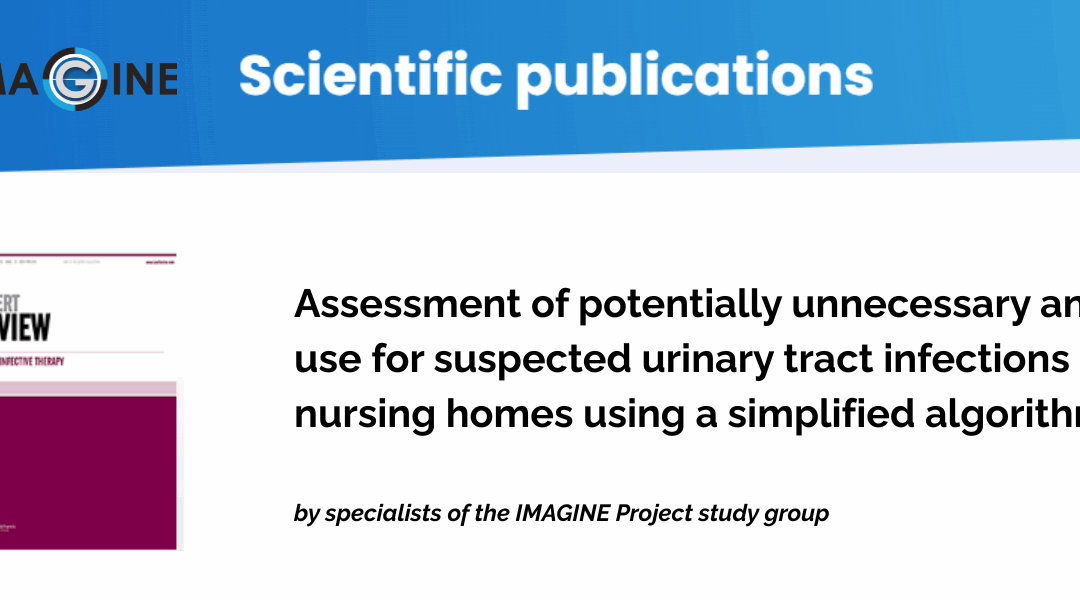Researchers from the IMAGINE Project team released this article in September 2024, offering an in-depth analysis of frequent mistakes in diagnosing urinary tract infections (UTIs) among nursing home residents. This is available in the journal Expert Review of Anti-infective Therapy here.
A major analysis involving over 110 nursing homes across eight European countries has shown that more than half of the antibiotics prescribed for suspected UTIs in residents without catheters may not have been necessary. The findings come from the IMAGINE Project’s initial audit, which examined real-world antibiotic use and diagnostic practices from February to April 2024.
Using a newly developed simplified diagnostic algorithm, researchers found that 54.1% of antibiotics given for UTIs in non-catheterized residents were potentially avoidable. The study also revealed that nonspecific symptoms like confusion, foul-smelling urine, and poor general condition were more often cited than typical UTI signs such as dysuria or urgency. This misinterpretation of general symptoms often leads to overdiagnosis.
Another key finding was the overuse of urine dipsticks, performed in nearly three-quarters of cases. Dipstick use was associated with a slightly higher rate of inappropriate prescribing—despite current clinical recommendations advising against their use in nursing homes.
The IMAGINE Project developed its simplified algorithm in response to the lack of usable tools in long-term care settings. Unlike traditional methods, the new tool was designed with direct input from frontline nursing staff and is tailored for daily decision-making.
These results underscore the urgent need for improved training, clearer protocols, and better diagnostic tools in nursing homes. By empowering staff with evidence-based methods, the IMAGINE Project aims to strengthen antimicrobial stewardship and reduce resistance across Europe’s aging population.
Please visit our scientific articles section — click here to explore further.

